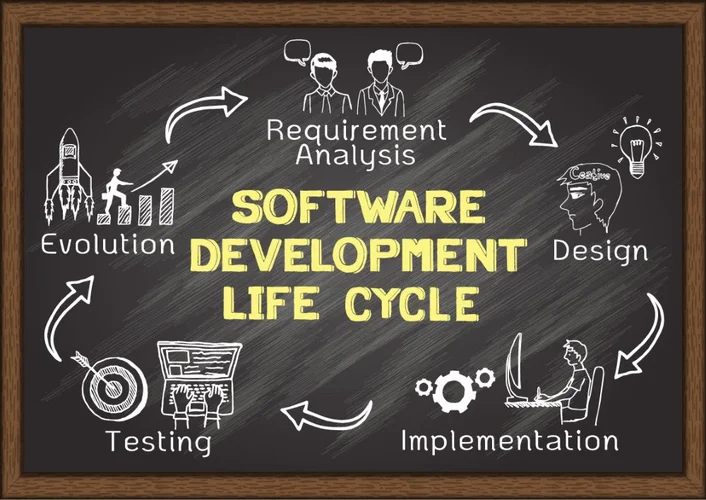Instead, more complex data structures like objects and arrays are implemented using references. The language does not provide any explicit pointer manipulation operators. It is still possible for code to attempt to dereference a null reference , however, which results in a run-time exception being thrown.

In this way, characters can be very efficiently translated from ‘raw data’ to a usable sequential index and then to an absolute address without a lookup table. In C++, by default arguments are passed by value and the changes made in the called function will not reflect in the passed variable. The changes are made into a clone made by the called function. If wish to modify the original copy directly and/or avoid the overhead of cloning, we use pass-by-reference. Pass-by-Reference with Reference Arguments does not require any clumsy syntax for referencing and dereferencing. We can create function pointers to invoke a function dynamically.
C Control Statements
The definition with references, however, is type-checked and does not use potentially confusing signal values. For this reason, data structures in C are usually dealt with via wrapper functions, which are carefully checked for correctness. Pointers are directly supported without restrictions in languages such as PL/I, C, C++, Pascal, FreeBASIC, and implicitly in most assembly languages. They are primarily used for constructing references, which in turn are fundamental to constructing nearly all data structures, as well as in passing data between different parts of a program. In order to provide a consistent interface, some architectures provide memory-mapped I/O, which allows some addresses to refer to units of memory while others refer to device registers of other devices in the computer. There are analogous concepts such as file offsets, array indices, and remote object references that serve some of the same purposes as addresses for other types of objects.
Hunter Dickinson benefited from Michigan basketball, despite lament – Detroit Free Press
Hunter Dickinson benefited from Michigan basketball, despite lament.
Posted: Thu, 18 May 2023 10:12:26 GMT [source]
Computers A variable that holds the address of a core storage location. A long tapered stick or a laser beacon used to call attention to objects, as on a chart or blackboard. These examples are programmatically compiled from various online sources to illustrate current usage of the word ‘pointer.’ Any opinions expressed in the examples do not represent those of Merriam-Webster or its editors.
pointer noun
Use the & operator to store the memory address of themyAge variable, and assign it to the pointer. Extended versions of COBOL also provide pointer variables What is pointer declared with USAGE IS POINTER clauses. The values of such pointer variables are established and modified using SET and SET ADDRESS statements.
- Also, as part of the C Interoperability feature, Fortran-2003 supports intrinsic functions for converting C-style pointers into Fortran pointers and back.
- A dangling pointer is a pointer that does not point to a valid object and consequently may make a program crash or behave oddly.
- Typical examples of pointers are start pointers, end pointers, and stack pointers.
- A function pointer will store the address of a function to be invoked.
- Pointers allow us to return multiple values from functions.
As a result, the address stored in the stack pointer register is constantly changing. When a new data element is pushed onto the top of a stack, the stack pointer is updated to the next physical memory address on the stack. When a data element is popped from the top of a stack, the stack pointer is again updated to the next address, but this time the address changes in the opposite direction. A dangling pointer is a pointer that does not point to a valid object and consequently may make a program crash or behave oddly. In the Pascal or C programming languages, pointers that are not specifically initialized may point to unpredictable addresses in memory.
pointer | American Dictionary
Memory space for each pointed-to data object is typically allocated dynamically using external CALL statements or via embedded extended language constructs such as EXEC CICS or EXEC SQL statements. These pointer declarations cover most variants of pointer declarations. Of course it is possible to have triple pointers, but the main principles behind a triple pointer already exist in a double pointer.

Traditionally, we access the array elements using its index, but this method can be eliminated by using pointers. The address of operator ‘&’ returns the address of a variable. But, we need to use %u to display the address of a variable. As you can see in the above figure, pointer variable stores the address of number variable, i.e., fff4.
Origin of pointer
A learning management system is a software application or web-based technology used to plan, implement and assess a specific … Generally Accepted Recordkeeping Principles is a framework for managing records in a way that supports an organization’s … Secure access service edge, also known as SASE and pronounced sassy, is a cloud architecture model that bundles network and … Connect and share knowledge within a single location that is structured and easy to search.
When not used in declaration, it act as a dereference operator. In database management, an address embedded within the data that specifies the location of data in another record or file. Noun A needle-like component of a timepiece or measuring device that indicates the time or the current reading of the device. IBM Enterprise PL/I compilers have a new form of typed pointer called a HANDLE.
Pointer Program to swap two numbers without using the 3rd variable.
Some of the variants of Modula-2 (such as Modula-3) include garbage collection. It is possible to simulate pointer behavior using an index to an (normally one-dimensional) array. In this case, if the value of item is less than that of head, https://globalcloudteam.com/ the caller’s head is properly updated to the address of the new item. Nil is the empty list, and Cons a is a cons cell of type a with another link also of type a. This is usually stated more succinctly as “ptr is a pointer to int.”

A thin stick that a person uses to show people where to look on a screen, map, etc. A moveable icon in a graphical user interface, as an arrow, that marks the user’s location in the interface relative to areas of the screen where user input is possible. One of a breed of short-haired hunting dogs trained to point game. Drew reflected on his time spent with Klum, telling PEOPLE how the model gave him some pointers to kickstart his next career change.
Null Pointer
In the usual case, a pointer is large enough to hold more addresses than there are units of memory in the system. The first case may, in certain platforms such as the Intel x86 architecture, be called a segmentation fault . The second case is possible in the current implementation of AMD64, where pointers are 64 bit long and addresses only extend to 48 bits. Pointers must conform to certain rules , so if a non-canonical pointer is dereferenced, the processor raises a general protection fault. More generally, a pointer is a kind of reference, and it is said that a pointer references a datum stored somewhere in memory; to obtain that datum is to dereference the pointer. The feature that separates pointers from other kinds of reference is that a pointer’s value is meant to be interpreted as a memory address, which is a rather low-level concept.